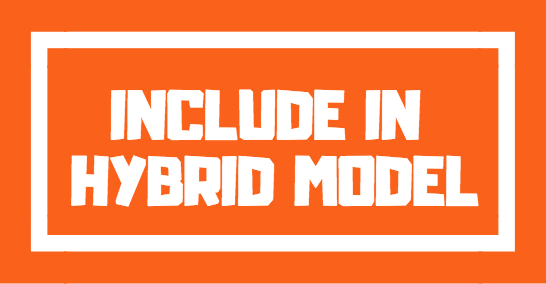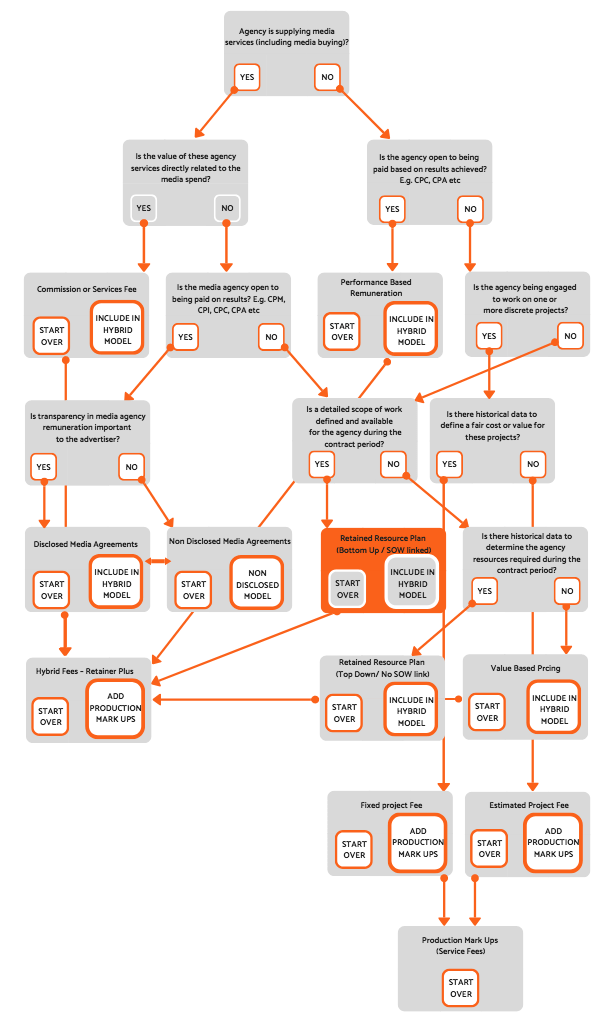For those organisations that can predict their scope of work requirements, a much better version of the Retained Resources links the number of resources to specific outputs or deliverables. The fee is calculated the same as the Top Down approach but now the total retainer and agency resources are linked to the delivery of the define scope of work.
-
- This links the agency resources to the tasks or projects to be delivered.
- The cost of the resources is calculated using an agreed overhead and profit multiplier.
- The resultant annual fee is often paid monthly as a retainer.
- The actual agency resources used can be compared to the allowance in the retainer calculations to measure efficient of the agency relationship.
- If the scope of work changes then the agency resources and therefore the retainer can be recalculated to accommodate the changes.
- This can be part of a hybrid model covering some agency function only. E.g. Retainer resource to approved concept.
Advantages
- Delivers the best value.
- Pay for the specific resource actually required based on the scope of work deliverables.
- Marketer can have influence over the specific resources actually working on the account.
- Relatively easy to budget once the scope of work and resource plan have been agreed.
- Gives the agency guaranteed resources as they are paid for by the retainer.
- Relatively flexible if each specific output is given a value so that projects can be swapped in and out as the scope changes.
Implications
- Requires a detailed scope of work to be clearly defined.
- Resources are retained and therefore represents a longer term commitment.
- Takes a little extra time upfront to establish the scope of work deliverables.



